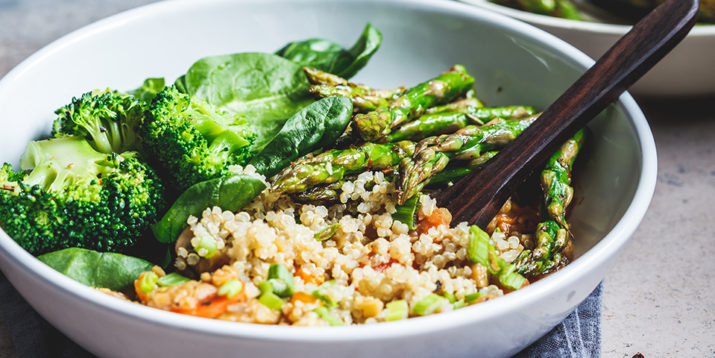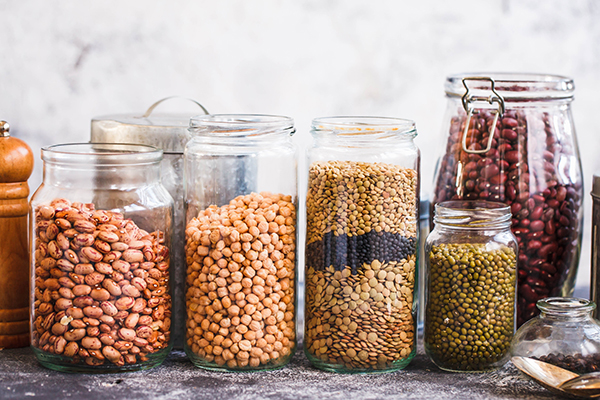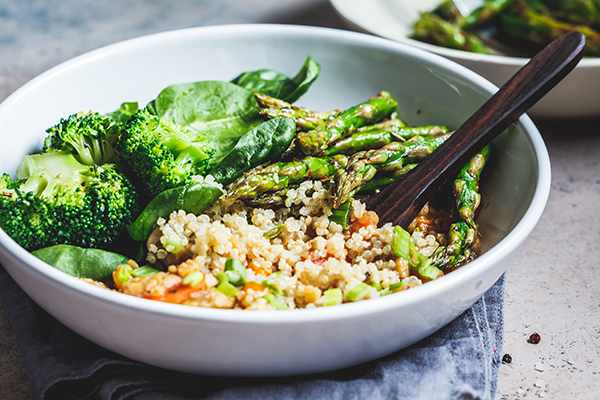Here’s What You Need to Know About Dietary Fiber

Dietary fiber may not be the most exciting nutrient, but it’s a key part of any healthy eating plan. It’s also vital for helping keep your digestive system functioning…er, regularly.
And most of us aren’t getting enough of it.
According to the Academy of Nutrition and Dietetics, the general recommendation for daily fiber intake is 25 grams for adult women and 38 grams for adult men.
But one survey found that only 5 percent of us are meeting those fiber goals.
Here’s what you need to know about the different kinds of fiber, why your body needs it, and how to get more fiber in your daily diet.
What Is Dietary Fiber?

So what exactly is fiber? Dietary fiber — a.k.a. roughage, bulk, or just plain fiber — is a plant-based carbohydrate that your body can’t break down.
While your body digests and uses nutrients like fats, protein, and minerals, most fiber is not metabolized in your gastrointestinal system.
Instead, fiber “acts as a broom to help remove waste products from the body,” explains Mindy Haar, Ph.D., R.D.N., C.D.N., Clinical Associate Professor and Department Chair of Interdisciplinary Health Sciences at New York Tech.
Soluble fiber vs. insoluble fiber
There are two types of fiber — soluble fiber and insoluble fiber.
“Both types of fiber are equally as important, and should be included in the diet regularly,” says Patricia Bannan, M.S., R.D.N., a nutritionist and healthy cooking expert.
Soluble fiber dissolves in water to form a gel-like substance in the body, slowing the digestive process, she explains. This can help you feel fuller longer and may help with maintaining healthy blood glucose levels.
Soluble fiber is found in oats, beans, nuts, seeds, and fruits like apples and citrus.
Insoluble fiber does not dissolve in water and adds bulk in order to help facilitate movement through the digestive system. This can help support regularity and address temporary bowel movement issues, Bannan adds.
Sources of insoluble fiber include whole grains, wheat bran, and vegetables like potatoes and cauliflower.
If you’re considering fiber supplements, be sure to choose one that contains both soluble and insoluble fiber.
The Benefits of Dietary Fiber

So why is dietary fiber important? Here are a few of the key benefits:
1. Weight management
Dietary fiber can help you feel more satiated, which can help prevent overeating.
2. Heart health
Fiber can support heart health by helping maintain healthy cholesterol levels within normal ranges.
3. Gut health
Fiber can be beneficial for digestion and overall gut health.
“Fiber acts as a prebiotic, boosting the proliferation of probiotics in the intestine,” Haar explains. “There are many kinds of probiotics that [support] good health, so consuming a variety of high-fiber foods optimizes the gut environment.”
How Much Fiber Per Day Should You Consume?
USDA recommendations differ by gender, so adult women should get between 22 and 28 grams of fiber daily, while men should get between 28 and 34 grams, dependent on age. The FDA goes on to further recommend that roughly 25 percent of total fiber consumed be soluble.
What Are Easy Ways to Eat More Fiber?
There are plenty of ways to add more fiber to your meals. “Adding more fruits, vegetables, legumes, and whole grains to your diet is one of the easiest ways to increase fiber intake,” Bannan says. “Find a way to add a serving of vegetables to each meal.”
Haar recommends these easy food swaps to boost your daily fiber intake:
- Switch from white bread to whole-grain bread. (Check the nutrition label and make sure each slice has at least 3 grams of fiber.)
- Look for high-fiber breakfast cereals, or make homemade oatmeal.
- Substitute whole grain or bean-based pasta for regular pasta.
- Substitute brown rice for white rice.
- Try whole-grain cooked wheat in the form of wheat berries, couscous, bulghur, or kasha.
- Quinoa is a grain-like food that provides fiber and protein.
- Replace meat with beans or chickpeas in a few meals each week. (Black bean chili, anyone?)
What Happens if You Consume Too Much Fiber?
Thankfully, overdoing it on dietary fiber isn’t something most people have to worry about. Still, it is possible to consume more fiber than your body is prepared for — and you may suffer some uncomfortable digestive consequences as a result.
“If you’re not used to eating a lot of high-fiber foods, and then all of a sudden you start to consume a high-fiber diet, you could experience gastrointestinal discomfort, gas, bloating, and possibly diarrhea,” says Krista Maguire, R.D.
Constipation may also be an issue if you’re not drinking enough water, she adds.
To avoid discomfort, introduce fiber gradually so your body can adapt, Maguire suggests — and make sure you stay hydrated to keep everything moving.
Learn more:
- Why a whole-foods, plant-based diet is so important
- The Ultimate Guide to Fiber Supplements
- How guided nutrition programs can help you build long-term healthy habits
